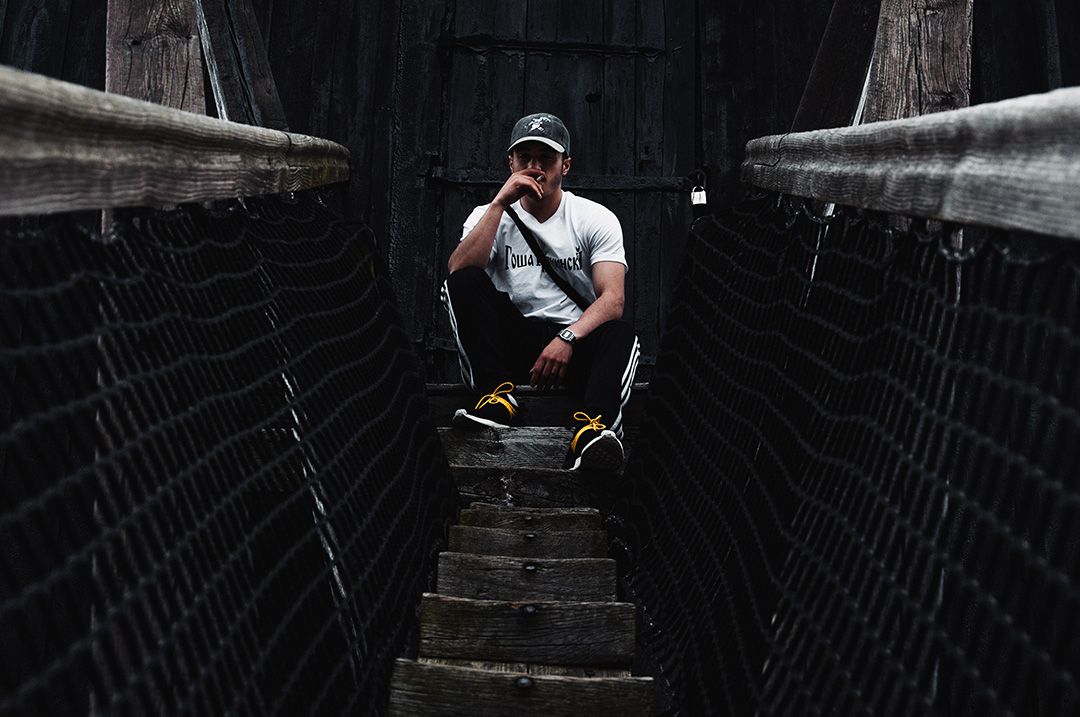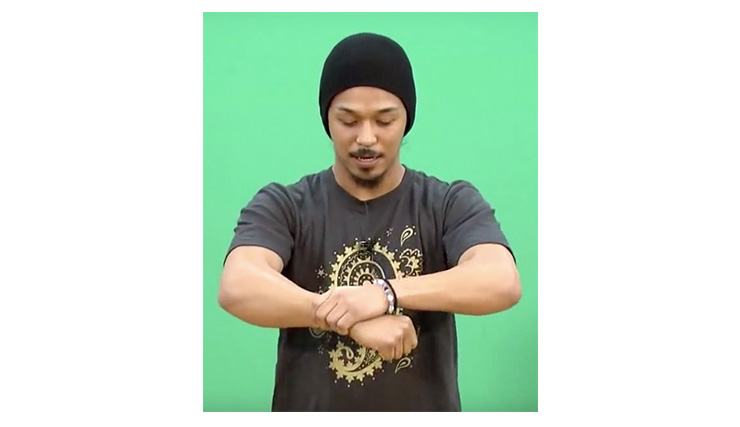A worrying thought, isn't it?
You are following tutorial videos, but you can’t help wondering if you will ever become a popper like them.
What makes your pop much smaller than the instructors?
You are all doing the same move. Stand on feet, arms straight, on the beat, and pop. You know, the usual fresno lessons.
But something is missing. You are not carrying the heavy sound effect they carry. Their body seems to vibrate so much more. How do you know if you are doing pop right?
Good question. The problem is, you do not really have an answer.
Most of the training, you feel like you are stumbling around in the dark. You are not sure what is working and what is not. It feels like a long never-ending tunnel.
Maybe you came here to find some answers. Maybe you are hoping I will tell you the problem with those videos.
But I won't.
There is just so much muscle anatomy that comes into play that it takes a long time to understand the full nuances those tutorials carry.
What I can do is to lay out common pitfalls and right expectations. So you can keep coming back to the guide as you develop your skills, and adjust your steering.
Here is a big fat guideline of how to pop.
Table of Contents
What is pop?
Popping is about hitting your muscle on a particular rhythm. Acky, one of the legendary poppers, said you would pop with a visualization of an instrument. You are using your whole body as a drum just like vocals, guitars, etc. That makes pop extremely versatile in expressing your musicality.
Poppers achieve this magic by flexing their muscle and relaxing instantaneously. That action looks so sharp that it gives an illusion their whole body is beating the music.
Although popping genre came out with funk era of the 80s, the rising popularity of EDM pop like ChainSmokers has made popping relevant. We cannot ignore the still relevant Dubstep either. Pop is capable of expressing that heavy electric blasting tone as well as rapid ticking sound well.
Dancer's Benefits
Finally Call Yourself a Popper
Can you tell the difference between popping and robot dance? The answer lies in the fact that robot is a style of movement, whereas pop is the action you are hitting your muscle. Of course poppers move around too. They can do robot move, and still be poppers. On the other hand, robot dancers are not called poppers unless they master the pop. In the dance scene, popping is often used as an umbrella term that captures broad categories of dancers.
Pop is the foundation of popping genre that sits below styles. There are boogaloo, robot, waving, and tutting of which poppers accompany in their move. Without popping their muscles, they become boogalar, robot dancer, waver, tutter, etc. That is fine if that is the style you are going for. It becomes a problem if you decide to enter the popping battle. There is no chance you will ever win a single round without a single pop.
This also means that if you are incorporating pop, you do not need to follow any of those styles. You can invent your own type of steps, and still win a popping contest as long as muscle hit is there. That is the flexibility of popping genre.
Internal Rhythm and Groove
You will be tested your rhythmical sense with pop. As demonstrated above, pop is good for expressing drum-like beats. The conventional role of a drum is to set the baseline of the music. Pop is similar. It works as the central force to bind your various steps into one single piece.
A typical song is organized into 8 beats. Without organization, music becomes noise. Even though you may catch scratch sound or skip several beats, your musicality is always following the imaginary base.
Having the internal rhythm is good. It gives you the groove necessary to give an order in your dance routine. Otherwise, your choreography becomes a set of random movements. A good metaphor is a metronome. Pianists use it to assist themselves to get back on a track of music.
To see more about internal rhythm, check out this Cothkoo's routine from 5:38. It is so bold of them to go into the routine without music. Cothokoo can do it because they are both confident in their ability of internal rhythms.
Lasts Forever
How long are you planning to dance? If you are like me, it is too depressing to practice on skills that only peaks shortly thereafter. Unfortunately, the lifestyle of professional athletes tells us that our maximum physical capability has a short span of the 20s. Street dancing is no exception. Your anaerobic muscle simply cannot keep up.
To the contrary, pop muscle is different. It seems to build on top of the other. Popin' Pete, the founding father of popping, in his 50s. Even though the sharpness of his steps has stagnated over the years (please keep this between me and you), his pop muscle is stronger than ever. Just like good Whiskey, aging works like magic dust on your muscle, making it better and better.
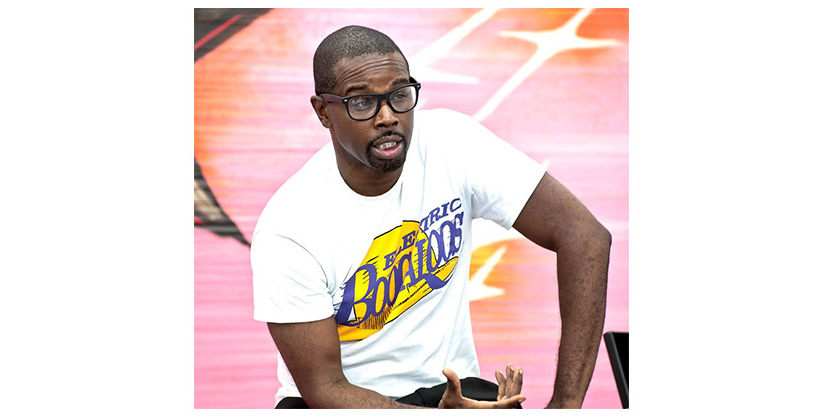
Pop by Body Parts
Pop is about your muscles. For beginners, it is important to understand which muscle should be working. Please trace down each part carefully with your own hand before getting into specific training.
Arms
There are 3 kinds of arm muscles: triceps, biceps, and forearms.
Triceps
It is the muscle that is back of your arms just underneath the shoulders.
First, let's confirm which muscle you will be using. From the relaxed position, put your hand on the back of the other arm, and slowly extend that arm straight. You will feel the lump as you try to extend the arm further beyond.
This muscle can be practiced by holding your arms straight in the air. And, twist both of your elbows up towards the ceiling. Relax instantly after.
You will be using triceps pop, when hands are extended straight. The direction can be forward, backward, upward. The most basic form of fresno comes with triceps practice. This part is the strongest of all arm pop.
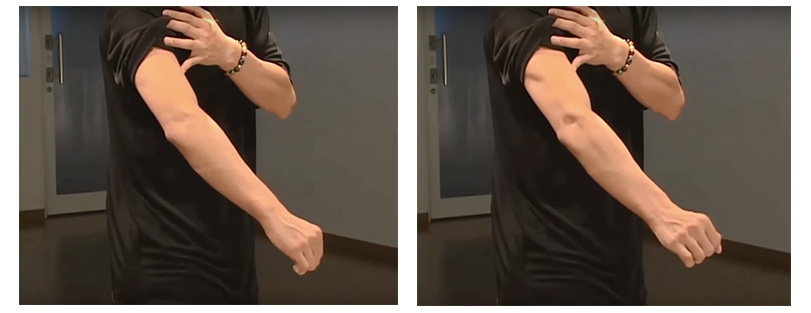
(Source: Dance Style Poppin’)
Biceps
If you have exercised dumbbell lifting, this is the muscle you have been using. You see the lump easily with arm wrestling too.
Practicing this muscle is straightforward. You can do it by holding out your arms horizontally to your shoulders, and bend your arms at 90 degrees. Then flex your muscle and relax. Again, flex and relax.
You will be using biceps in a position where your arms are bent, like when tutting or puppetting. This pop is quite adaptable to most movements.

(Source: Dance Style Poppin’)
Forearms
Along with biceps, you will be frequently using forearms. They go hand in hand.
The muscle can be further divided into the bottom and upper parts of your forearms.
You can experience this muscle by holding your hand in a relaxed position, and slowly bending your wrist upwards. As it reaches towards the end, you will feel the top of your forearm flex. Likewise, you can bend the wrist downward to feel the bottom of your forearm tense.
Even though they have smaller power compared to triceps and biceps, I find forearms useful in ticking, as it is easier to control in fine detail.
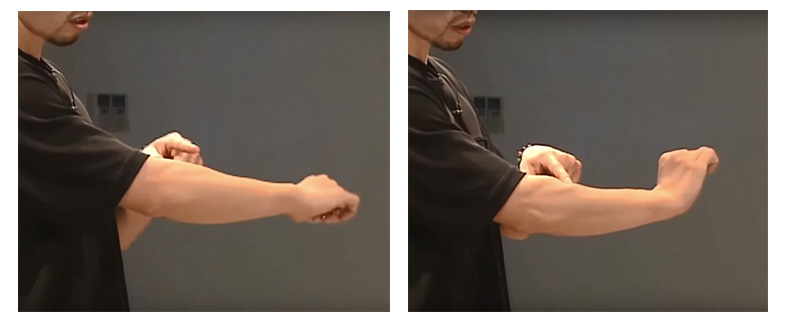
(Source: Dance Style Poppin’)
Training Methods
For different practices in each of the 3 muscles, check out this Kid Boogie's tutorial. My suggestion on top of his is to slow down more in the beginning. Pop only once every 8 beats for example. Also, make sure you cover awkward position. Here is some challenge for you:
- Hit triceps with your hands reaching the ceiling.
- Hit biceps with your arms pulled backward.
- Hit forearms with your hands flipped upside.
The more versatile your hit position of arms become, the more variety of poses and movements you can pursue.
Tips
In the beginning, it is tempting to use your shoulders to magnify your pop effect. But, that is a bad habit. Your dance styles will be always messy and disturbed by the moving shoulders. Instead, you should be building the arm muscle for the power.
Another thing to watch out for is musicality. Even if you have good hearing, the mere act of flexing muscle tends to push you faster than the music. You have to hit on the beat. Listen to the music carefully, and stay on beats.
Neck
You will find neck pop counterintuitive at first since the muscle around your neck is accustomed to supporting only the weight of the head and not to draw in instantaneous force. Nevertheless, if you can pull off the neck, pop energy from your legs will be contained within your body. That will give you deep pop leaving the audience with heavy explosive sensation.
There are 4 directions you can go with the neck. For each side, you can practice it by pressing your hand against the head and not letting your head move. Keep pushing. You will feel the tension in your neck resisting that force. That tension is your neck pop.
Front neck (platysma muscle) is from your chin all the way down to the clavicle. You can visualize it with dog barking woof.
Side neck (sternocleidomastoid muscle) runs from beneath of your ears all the way down to bones.
Back neck (Upper Trapezius) runs from right behind your skull down to shoulders.
Training Methods
Once you get used to building the tension with your hand, let's find the click point.
Each side should be done separately as each has distinct muscle function. For the front, attach your head to the chest. For the side, attach your head to the shoulders. For the back, attach your head to the back. As your head reaches the limit, you should find the click point.
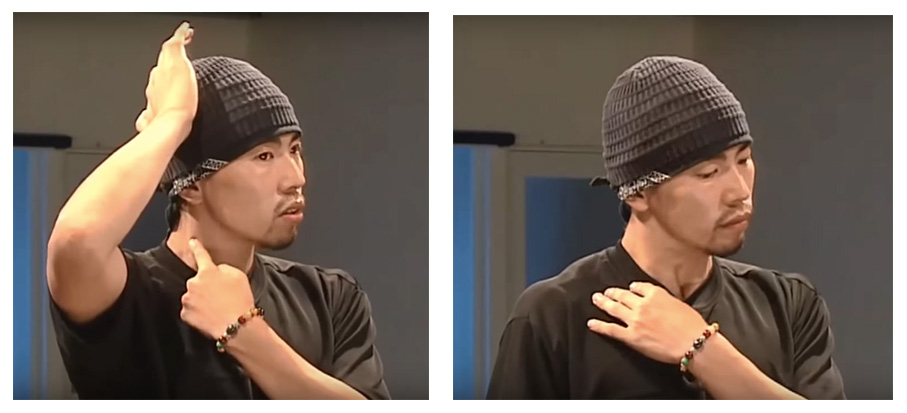
(Source: Dance Style Poppin’)
Tips
Most poppers seem to incorporate only one side at a time. For example, they hit the right neck as they boogaloo swing into the right side, and hit the back neck as they fresno. Please adapt it with your own swag.
Also, it is the problem that I can share with people with bad postures. After I spend a whole day working in an office or studying at a desk, the back and side of my neck become so stiff that neck pop barely works. If that is your case, try massaging your neck a little bit before practice. It will make neck pop easier.
Legs
Most explanations of leg pop are simplified. The mechanism is in fact straightforward, but it has to be practiced with caution since it can hurt your knees in the long run.
Generally, there is backward and forward. Although these are the 99% of pops you see out there, there are other types like sticking out leg pop and rotation leg pop.
Backward
You will be using backward legs as you step, walk, and move. The mechanism is similar to the natural body movement.
This muscle is not as well defined as the other pops. It ranges from thigh especially on top of your knee bones and muscle just underneath your hip on the back (adductor longus muscle). Your calf (gastrocnemius muscle) will come into play as well, but it comes naturally with your improvement. So I would not worry about it too much.
To experience the thigh, bend your body and try pulling your kneepan upwards. If you feel it twitching upwards a little, that is the knee muscle you are supposed to be popping.
For the hip, stand up straight and try straightening your leg from the bent position. You will feel the abductor muscle becoming tense. It is important to differentiate it from squeezing your buttock. Try focusing on one leg at time, as they should be separate muscle.
It is the most common leg pop employed by poppers, designed by founding popping group, electric boogaloos. It is quite versatile to incorporate it into your steps.
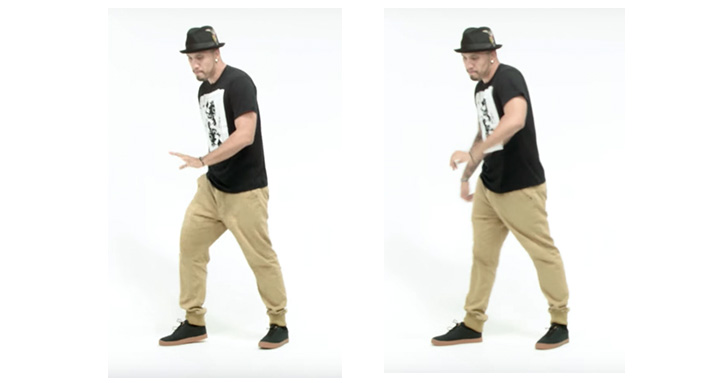
(Source: VincaniTV)
Forward
Some dancers like to mix in forward legs. While this body composition makes it hard to walk around, you will be able to show heavy weight deep pop. It is often accompanied by robot style, where your legs are more stationary.
To experience, you stand out in the straight position and lean your weight on one leg. Then pop out your leg by bending your knee suddenly. The feeling is you are dropping your waist down, clicking it with your knee. The functioning muscle is similar to the backward pop.
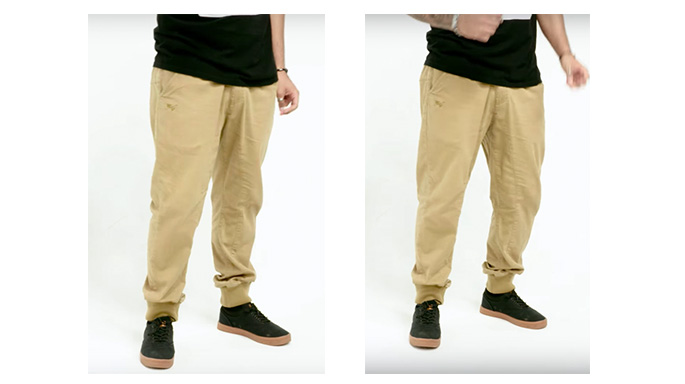
Training Methods
You will be doing 4 positions in a set:
- Stand on left leg: pop, pop
- Stand on both legs: pop, pop
- Stand on right leg: pop, pop
- Stand on both legs: pop, pop
- Repeat
First stand on a shoulder length, and follow that 4 positions repeatedly. The whole set should complete in 8 counts. When standing, you are popping both of your legs.
In the whole process, your height never changes. Your head is looking straight without moving up or down. That is the sign you are relying on the muscle pop properly rather than bouncing.
Once you get used to it, try leg popping while walking. Put your whole weight on the stepping foot either forward or backward. Keep a good posture especially around your waist and shoulders. It is awkward in the beginning, but you should be able to do it as long as you are aware of weight position. This will help you pop using the entire floor.
Tips
There are 2 points you should be cautious about.
First of all, please do not stick up your waist. You will look like a humping monkey! Many beginners do that because they want to make their pop look bigger. Hip seems to be an easy place to flex for everyone (I am not sure why:P). To prevent it, you might find it easier to pop with the whole weight on one leg. It is okay to skip popping both legs simultaneously until your pop muscle builds.
Second, leg pop can hurt your knee joint badly if you slum it. As you gain experience, your thigh muscle learns to prevent your knees from straightening completely. Until then, you need to let the power come from the arms, and not the legs. Experiment doing leg pop with your legs wide opened. It is opened to the extent you can almost touch the floor with hands. You will find it impossible to slum your legs. That much amount of power is necessary for the leg pop.
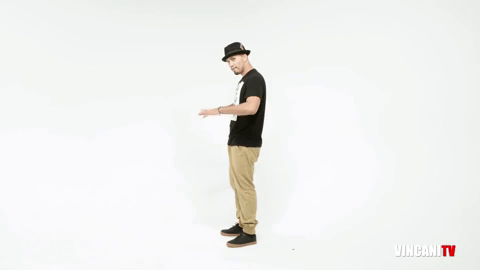
(Source: VincaniTV)
Other Muscles
We have talked about arms, neck, and legs. Those are the 3 fundamentals every popper must do, as is taught in Popping Pete workshop. Regardless of your style, it is a good idea to practice those 3 if you want to be popping.
Having said that, you can technically pop anywhere that comes with muscles. Even though most well-known dancers use their chests and stomachs, they are secondary and supporting in its role as the power source. The main power always comes from your arms, followed by neck and legs. Please read the followings for your optional training.
Chest
You might visualize chest pop as the move where you put your hand on top and bring out your chest (I think of the scene from Step Up 2).
But that is chest pop in hiphop genre, which is equivalent to popping your back muscle. Instead, chest pop in popping is about flexing your chest muscle instantly and relaxing. There is no moving shoulder or back. Many people misunderstand this difference.
Pop happens at the top of your chest (pectoralis major muscle). You can experience this by holding out your right hand straight in the air. And swing it rapidly towards the left. You can feel your chest twitch.
To practice, hold your wrist in front, and try to push your arms against each other. Once you flex enough to feel your muscle tense, relax. Then, flex and relax, flex and relax. I like this method, since grabbing your wrist makes it hard to cheat on with your arm pop.
Chest pop is useful in animation style where you want to show your funky trunk in a standing position.
Stomach
Along with neck, this is one of the most counterintuitive pop. It took me a long time to understand.
Stomach pop is actually the top 2 parts of 6 packs just below the rib (rectus abdominis muscle).
To experience, stand up straight and breath in air slowly. You will feel your stomach move up if you concentrate. Now, inhale instantly and push up your muscle. That movement is stomach pop.
One practice method I learned from my old teacher is to have someone push your lower back right behind your stomach. By resisting the force, you will be naturally using stomach muscle.
Once you gain the knack, this pop is quite handy in lending you the power. It looks like your pop is coming from within your internal body.
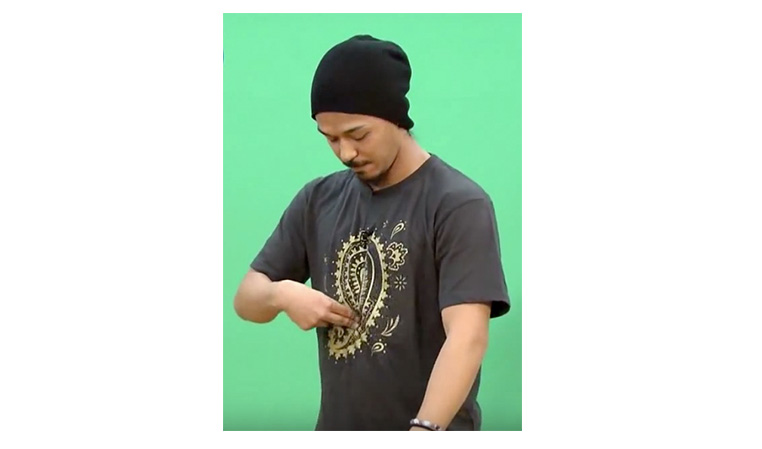
(Source: RisingDanceSchool)
Max Out, Max Down
Pop is different from workout even though they are both the muscle we are talking about. Although I used the term flexing throughout the post for convenience, the right mindset is controlling your nerve. You are sending the signal to the muscle for a better control.
The advantage is you can attain hard pop regardless of your muscle mass. It does not matter if you are a skinny girl. It is about flexing and relaxing your muscle instantly. Your body goes from 100% to 0%, 100% to 0% and so on.
To do that, being relaxed by default is the key to succeess. It is harder than it sounds. As practice goes, you tend to stay flexed and tense. It is important to shake off and calm your muscle at every hit. Pick a slow song to give enough rest period in-between beats. Massaging out your muscle is effective too.
Having said the importance of relaxing, you need to bring your 100% power as well. If you are not sweating from your pop practice, that means you are slacking off with only 30% or 50% of power.
It is the same as running. To be able to run longer, you have to reach your limit first. Likewise, your pop will never be big without full initiative. It is 100% and 0%.
I know, it sounds a lot to comprehend. I suggest you practice pop in two parts. The first half is all about popping as strong as possible. Give in all you have got. Just like warm up, you have to wake up your muscle. The muscle will acknowledge the potential of how far it can extend. Then, only in the second half, you will focus on relaxed, cleaner, on-beat training.
What if You Can't Really Do It
There is no need to be discouraged. It is not a skill that you can master after one day of practice. It does not matter how hard you try. The truth is it took me 3 years to see the impact of my pop. It is then I am finally able to impress people with the hit alone. Until then, it was more like bubbling.
Does that mean you should stop popping until you master pop?
No, not at all.
You can still amplify the effect with dime stop. And, with the small pop, you can practice and perform the moves with animation, boogaloo, glides, etc. By the time your muscle becomes strong, you will combine those techniques with pop, and blow people's mind.
One thing I like about pop training is its quietness. You can literally do it anywhere even in the crowd like at a shopping mall. People will hardly notice you.
Pop here, and pop there.
The most important thing is to have fun. Take a long run game on this, just like a workout. Eventually, it will come back to you with a big payoff.
